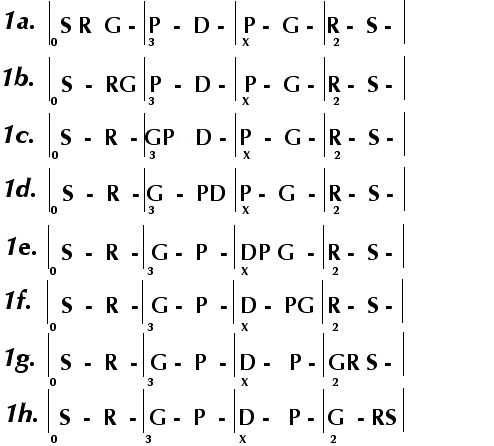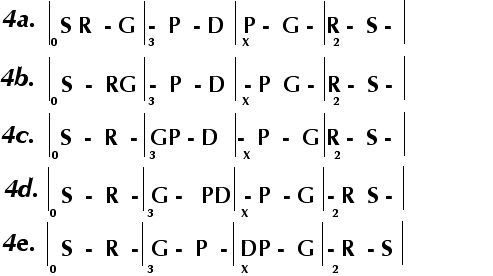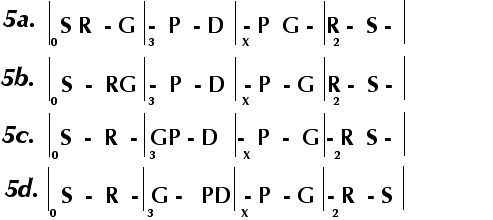Education Indian music music: layakari practice riyaaz
by Warren
1 comment
Meta
SiteMeter
Brighter Planet
Layakari Practice: The N+1 Game
Here’s another installment in my series of practice materials. This is another approach to the mastery of layakari in the 16-beat teentaal cycle. I call this the N+1 Game.
The object of this exercise is to explore a rich yet tightly constrained set of melodic materials in a variety of rhythmic phrasings. The same melody is sung in thirty-six slightly different rhythmic variations, each one fitting neatly into one cycle of teentaal.
We will be using the same mind-bendingly generic sargam composition in Raga Bhoopali as the resolution point of these variations, but it should be obvious that the same exercise can be carried out in any raga with an appropriately modified sequence of notes.

The principle of variation is simple:
How many beats are you going to fill up? Sixteen.
If each note lasts two beats, how many notes do you get? Eight.
So… let N = 8.
Now, add 1.
We need a sequence of (8+1) notes for this exercise. In a raga with no chalan restrictions, a simple ascending and descending arch will do the job very nicely, thus:
S R G P D P G R S.
These nine notes must be fitted into a sixteen-beat cycle with the simplest combination of rhythmic values possible. Since an eight-note sequence will have each note equal in length (two beats each); a nine-note sequence will have seven “long” notes lasting two beats, and two “short” notes lasting one beat each. Expressed as a formula, it looks like this: 7L + 2S = 16.
There are eight possible versions of this melody where the two short notes are next to one another. In order, they are SSLLLLLLL, LSSLLLLLL, LLSSLLLLL, LLLSSLLLL, LLLLSSLLL, LLLLLSSLL, LLLLLLSSL and LLLLLLLSS:

Interestingly enough, there are seven possible versions where the two short notes are separated by a single long note. In order, SLSLLLLLL, LSLSLLLLL, LLSLSLLLL, LLLSLSLLL, LLLLSLSLL, LLLLLSLSL and LLLLLLSLS:

Even more interesting, there are six versions where the two short notes are separated by a pair of long notes. SLLSLLLLL, LSLLSLLLL, LLSLLSLLL, LLLSLLSLL, LLLLSLLSL, and LLLLLSLLS:

Can you guess how many versions have three long notes between the two long notes? SLLLSLLLL, LSLLLSLLL, LLSLLLSLL, LLLSLLLSL, and LLLLSLLLS:

With four long notes: SLLLLSLLL, LSLLLLSLL, LLSLLLLSL, and LLLSLLLLS:

With five, we get the following: SLLLLLSLL, LSLLLLLSL, and LLSLLLLLS:

Six gives us these two: SLLLLLLSL and LSLLLLLLS:

And finally, seven long notes between two short notes produces the following sequence, the last one of this exercise: SLLLLLLLS:

So, you’ll notice that the number of versions decreases by one each time we interpolate another long note between the two short notes. Thus the total number of variations is 8+7+6+5+4+3+2+1 = 36.
Once you, or your student(s) can render each of these variations in sequence, the challenge expands: render them in freely determined order. Once that’s accomplished, make up a new sargam passage according to the same principles, and apply the same variation procedures.
Have fun!
Finally, a word on a related subject.
If you’re studying or teaching music, you’re engaged in the long, slow, work of taking parts of our past and preparing them to travel into the future.
Therefore, you owe it to yourself and to the music you cherish — to educate yourself about climate change.
No stable climate – no music. It’s as simple as that.
MUSIC IS A CLIMATE ISSUE
>

You must participate in a contest for the most effective blogs on the web. I’ll recommend this website!